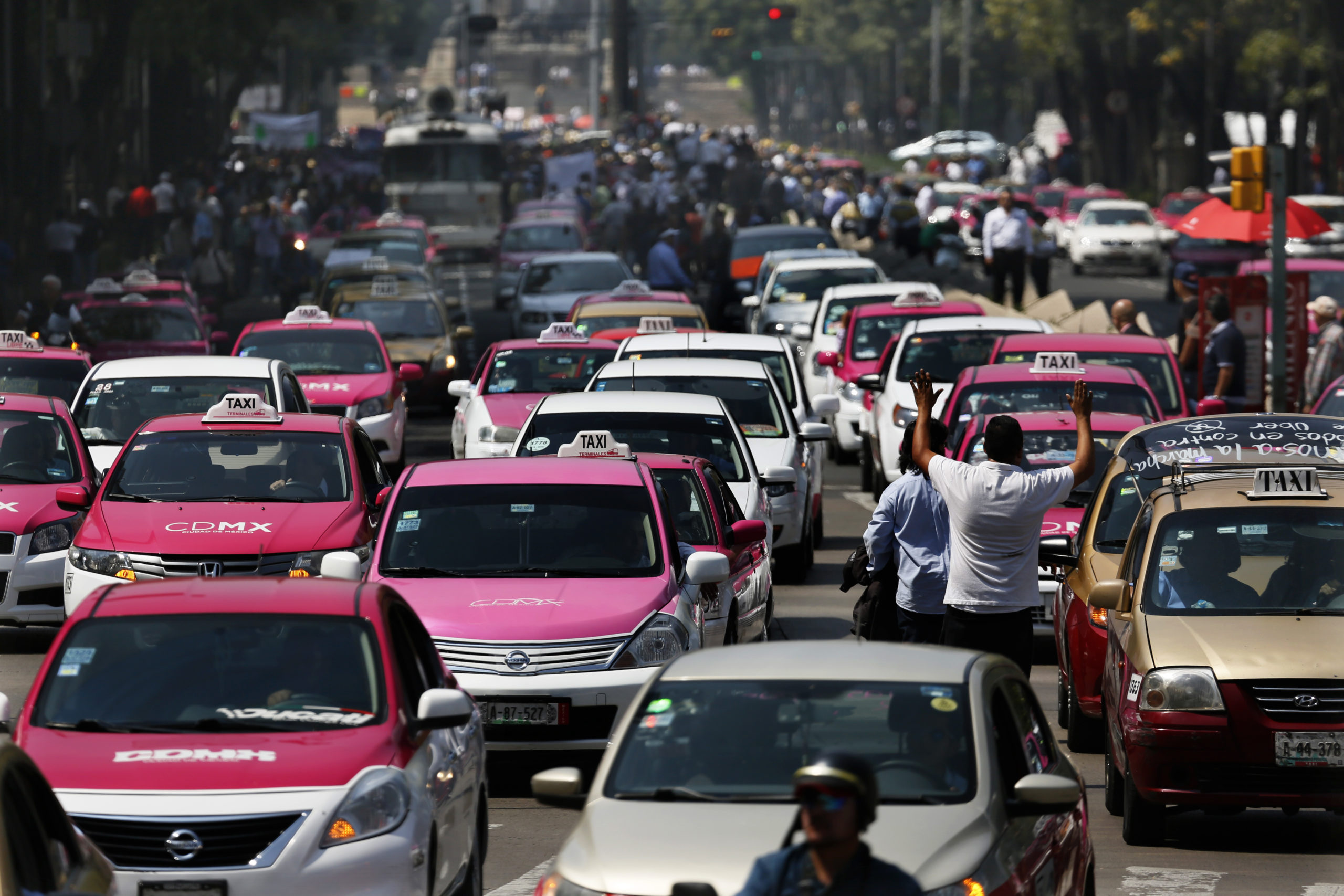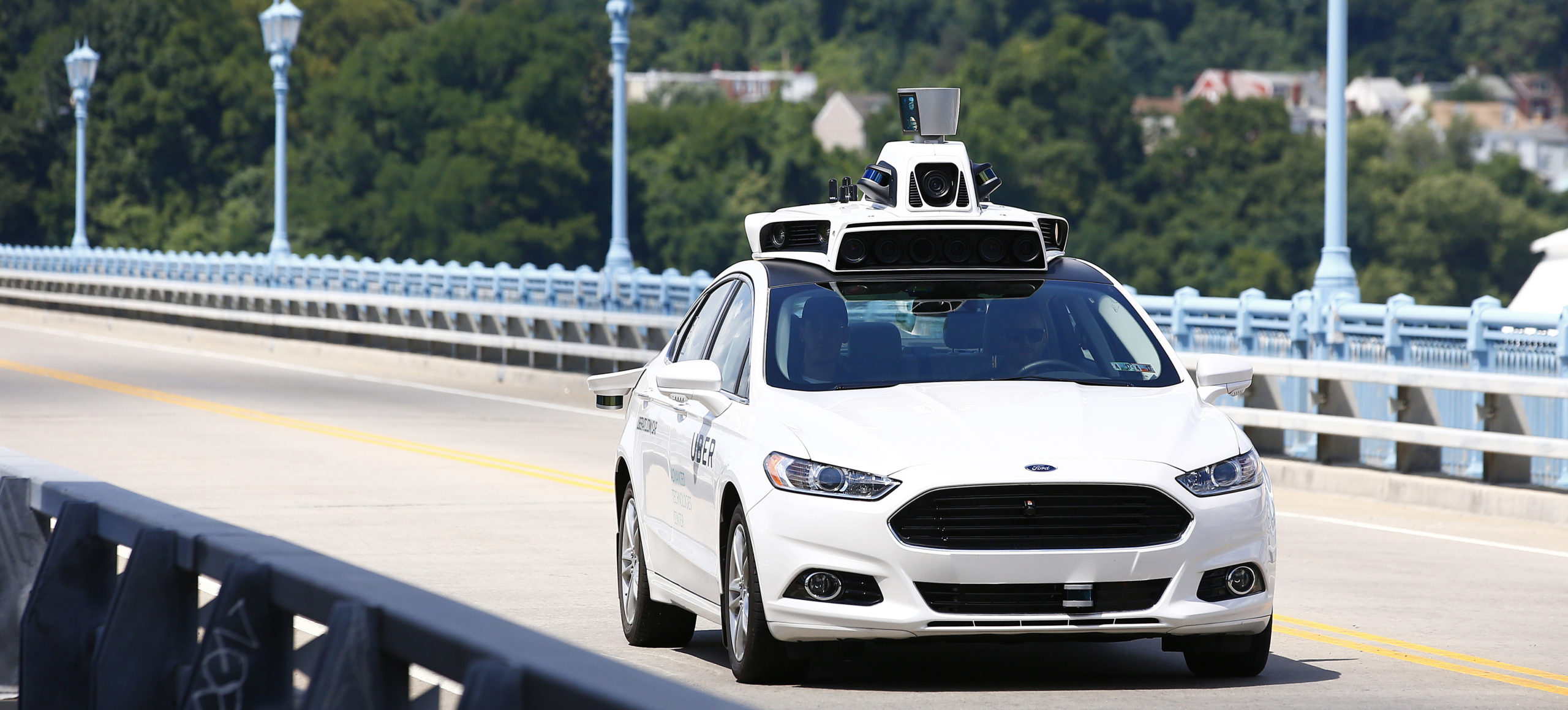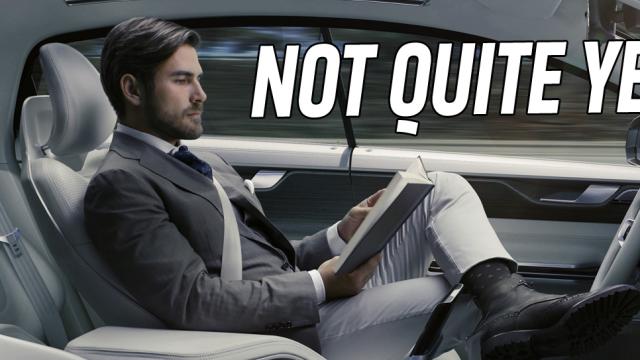Photo credit Volvo.
In 2009, screenwriter Charlie Kaufman spoke to a reporter about the excessive expectations that some people draw from movies. He highlighted how some hope for a life that mirrors Hollywood, and are eventually let down by reality. In the car world, autonomy is pegged as the ideal future, but will it happen as soon as our tech overlords say it will?
Who knows how much of a car enthusiast Kaufman considers himself — the mini-crash scene in Adaptation is, I think, quite memorable, even if he did hate it — but, in a way, his point meshes nicely with the exceeding expectations laid out for the future of cars, that is, how soon self-driving vehicles will become the norm.
“I think that people have expectations of themselves and other people that are based on these fictions that are presented to them as the way human life and relationships could be, in some sort of weird, ideal world, but they never are,” Kaufman said in that interview with The Scotsman. “So you’re constantly being shown this garbage and you can’t get there.”
The car industry does the same to consumers. There’s Lyft’s co-founder suggesting car ownership will be an outdated concept by 2025, or Ford touting that it will have autonomous vehicles available for the typical motorist by then, as well.
The car world as we know it will convert to a vast sea of robots, dramatically reducing the number of fatalities from accidents and allowing people to go about their commutes with their mind focused on things beside what’s on the road in front of them.
It’s an idea that, in the short-term, seems plausible for coastal, elite cities. But is this extraordinary expectation even doable elsewhere?

Traffic in Mexico City. Photo credit AP
Cities Vs. Everywhere Else
Sure, maybe 10 million semi-autonomous cars could be on the road by 2020, but we’re ways off from living in a world where manually-operated vehicles aren’t in the majority. Christ, there’s 256 million passenger vehicles on the road in the U.S. today. So it’s hard to imagine car ownership will — in the next decade — become a thing of the past in major U.S. cities.
It’d be nice to have the ability to relax and take a nap while a flawless Model 3 guides you to work, or to solely rely on ride-sharing services while living in a major city. And indeed research has enforced the belief that younger people are driving less, opting instead for areas with access to tolerable mass transit, bikeable roads, or on-demand car services.
Still, not everyone has the means to afford a driverless car — the cost for one will remain relatively high for some time — or the desire to live in a dense, urban core. And who knows how long our heralded app-based shuttle services can even last?
In short, the vision of a dramatic shift will probably happen in high population centres. For most of the U.S, the shift will be noticeable, but not substantial. It will probably be more semi-autonomous than full-on submission to the machine. It will be fine.
Whenever there’s hand-wringing about what the future holds for enthusiasts, oftentimes there’s a penchant for making it seem like an imminent dystopia, where everyone’s relegated to the passenger’s seat, comfortably, like a New Yorker cover, and fixing up your car is nothing but folklore. The flipside, automation boosters tout the technology as a life-saving development that’s going to takeoff as early as the next decade. In the middle, your basic consumer has a wealth of concerns about everyday life and who honestly knows if they will dig the new tech gear?
In the past year, we’ve been told that Ford’s design chief is preparing for a driverless society. And on the heels of a high-profile automated crash by a Google vehicle earlier this year, TechCrunch ran an open letter to the company that pleaded for it to “consider regulations, infrastructure and ethics in order to achieve this hybrid reality” where humans and robots drive in concert. The writer, a blogger named John Thuma, asks the company, along with Tesla, to release the code for its driverless software and rely on open-sourcing and others in “order to achieve the goal of a driverless society.”
“It is not about the driverless vehicle, it is about the driverless society,” the letter reads. “One day our grandchildren may recall times when humans controlled an automobile. They will speak of us as barbarians who trusted a painted yellow line to separate combustible materials travelling at high rates of speed, only to miss each other by a matter of feet.”
Our grandchildren will probably still love us, despite automated vehicles. The piece goes on to discuss A Vision for a driverless society, and yet no one really has a clear idea of what, exactly, that means. Are we talking about a world where no one has their hands clasped to a wheel?
No One Can Predict The Future
The truth is, no one really knows for sure what’s to come. Back in June, just days before reports of the first fatal crash in a self-driving vehicle emerged, the Wall Street Journal’s Christopher Mims highlighted a glut of research that suggested self-driving technology is going to further accelerate suburban sprawl, contradicting data about millennials driving less and eagerly moving to urban cores. Younger people may not even be as interested in moving to cities as much as we’re led to think, Mims notes, pointing to studies that indicate that more might prefer living in the suburbs.
“Millennials with kids in school, that’s children 6 and older, are actually less urban today than the same age group was 15 years ago,” Jed Kolko, the former chief economist at real-estate site Trulia, says in the piece.
This isn’t terribly surprising. Take Detroit, a city that has literally spoon-fed the New York Times with features about up-and-coming twentysomethings and their entrepreneurial spirit and new coffee shops for several years.
It’s a fine point for officials and boosters to crow about the purported renaissance of the city’s downtown, in part thanks to an influx of millennials, but, in reality, Detroit’s school system is a complete mess.
If a couple settles down, wants to have a kid, chances are more likely than not that they will head for the burbs, where they might find a better educational offering. With that, almost certainly, they will need a car.

Photo credit AP
But will they even want a driverless car? A couple years back, IHS Automotive released a report that claimed, “sometime after 2050,” nearly all vehicles on the road will be automated. This, expectedly, drew a wave of headlines — without much thought — that nearly all cars will be autonomous by mid-century. The more you dig in, however, the more it becomes less clear. In May, new surveys showed a majority of people aren’t even interested in driverless vehicles. The market for autonomous technology may be huge, but as Bloomberg noted: “All of this depends on people buying something they don’t currently want.”
This isn’t to criticise the notion that automated vehicles can save lives. It almost certainly can, though people will also die in new ways at times. But surely, with a majority of accidents being caused due to human error, it’s logical to assume that, in a driverless society, the number of fatalities from crashes would plummet. That’s great.
But 2050? It seems farfetched to wager that autonomous vehicles will cover the landscape by then. Even so, it seems far more of a stretch to figure, say, the remote confines of the upper Midwest will somehow transition within the next three decades. The industry has to figure out how to tackle weather before that could even be considered a possibility.
Autonomy Is A Luxury Right Now
This fall Tesla showed its self-driving technology can handle the pristine conditions of Palo Alto just fine — and we’ve done hundreds of miles seamlessly in a Model S. But autonomous tech isn’t yet to the point where driverless cars can handle the fog or snow, so it’s hard to figure where your uncle in rural Wisconsin fits into the equation. A robot car may avoid getting drunk, but if it can’t get over a little rain, there’s no value for it outside of sunny Southern California.
Then there’s cost. The IHS study also forecasts the price premium for self-driving technology will add $US7,000 ($9,656)-$US10,000 ($13,794) to a car’s sticker price in 2025; the following decade, that figure will drop to about $US3,000 ($4,138). Given that we’re completely failing to address growing income inequality in the US, is it safe to assume that a significant portion of the car-driving population will even be able to afford an autonomous vehicle in 30 years?
It’s notable that lawmakers and the federal government are starting to address how quickly the industry wants to push autonomous technology. But I’m left to wonder how we’re going to exactly pay for the infrastructure overhaul that’s needed to facilitate a sea of driverless vehicles. There’s the $US305 ($421) billion highway bill proposed a year ago, but that’s just a start of what’s likely needed.
And there’s a simple conundrum for the industry itself: It’s hard to build a car. While Silicon Valley might be ambitious as hell, if they can’t survive a first-run of production, and the big automakers realise enough people can’t be convinced that autonomy is the way of the future, the question of whether driverless cars will ever catch on seems just as open-ended as the market for electric vehicles.
The Coastal Elites And The Rest Of Us
So what is a driverless society?
If I had to guess, in 30 years, it’s probably one that’s fractured and exists in pockets, likely on the coasts. Major metropolitan areas in the United States — New York, San Francisco — will adapt and the kinks to establish harmony between computer and human will, eventually, be worked out. You may see a sizable portion of hands-free motorists elsewhere in smaller cities like Ann Arbor, and perhaps on a commute from suburban Cleveland into the city’s downtown, a mishmash of manually operated and driverless vehicles will mosey together down the highway.
In smaller populations, the occasional resident may shock a town when they putter down Main Street in a driverless car, a proud, beaming display of the future. But when they arrive at a stoplight, next to them will be a beaten down Ford Ranger, a couple of raggedy sedans, and the friendly eccentric driving an ancient Grand Marquis. Tesla owners in middle America will probably continue to have to drive hundreds of miles for service repairs, and hobbyists will still have their garages and freedom to make their cars sing. High-speed police chases and routine traffic stops will still be things.
Many who are unable to purchase a driverless car will still rely on used vehicles. And with estimates of how many equipped with full-autonomy will be on the road in the next 30 years being just that — estimates — it’s hard to grasp how soon they will trickle down into the secondary market.
At the end of the day, the technology will be a luxury — at least for the foreseeable future. In this scenario, the dent in reducing the 90 per cent of accidents that are caused by human error will feel more like a gradual lovetap than an abrupt wallop. Things will improve on the safety front, but for enthusiasts and regular consumers alike, the future will likely remain much of the same.
If you like to drive your car, that’s probably going to be a good thing.
